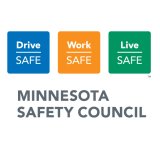Key DMR Tier 2 Repeater System Benefits
Enhanced Coverage and Range
DMR Tier II conventional repeater systems significantly enhance coverage and range compared to direct radio-to-radio communication. By strategically placing repeaters at elevated locations, these systems can extend the signal coverage area, overcoming obstacles such as buildings and terrain. This ensures that users can communicate seamlessly over a broader geographic area, improving overall operational efficiency.
Improved Signal Quality
One of the primary benefits of DMR Tier II conventional repeater systems is the improvement in signal quality. The repeaters receive weak signals from portable or mobile radios and retransmit them at a higher power level, resulting in clearer and more reliable communication. This ensures that messages are transmitted with minimal distortion or interference, leading to enhanced clarity and intelligibility.
Increased Group Calling Capacity
Conventional repeater systems allow for simultaneous communication between multiple users to increase call capacity. With DMR Tier II, users can access the repeater and communicate with one another concurrently, promoting efficient group communication. This feature is particularly beneficial in scenarios where multiple teams or individuals need to coordinate their activities in real-time.
Scalability and Flexibility
DMR Tier II conventional repeater systems offer excellent scalability and flexibility. As the system's capacity is determined by the number of available channels, it can be easily expanded by adding more repeaters or increasing the number of available channels. This scalability enables organizations to adapt their communication infrastructure to growing needs without the need for a complete overhaul.
Enhanced Privacy and Security
Privacy and security are paramount in professional communication systems, and DMR Tier II conventional repeaters offer robust features in this regard. Encryption capabilities are built into DMR Tier II, ensuring that sensitive information remains protected and confidential. Additionally, repeaters can be configured with advanced access control features to limit unauthorized usage, providing an additional layer of security.
Interoperability
Interoperability is a crucial advantage of DMR Tier II conventional repeater systems. DMR is an open digital radio standard, ensuring compatibility among different manufacturers' equipment. This allows organizations to choose from a wide range of DMR-compatible radios and infrastructure components, promoting interoperability and eliminating vendor lock-in.
Enhanced Management and Monitoring
DMR Tier II conventional repeater systems offer advanced management and monitoring capabilities. System administrators can remotely monitor and manage the repeaters, perform diagnostics, and optimize system performance. These features enable proactive maintenance, efficient troubleshooting, and swift resolution of any issues, leading to increased uptime and operational reliability.
Advanced Features and Functionality
Repeater systems offer additional features and functionality that can enhance operational efficiency. These include features like emergency signaling, remote monitoring, network connectivity, and dispatcher consoles.





